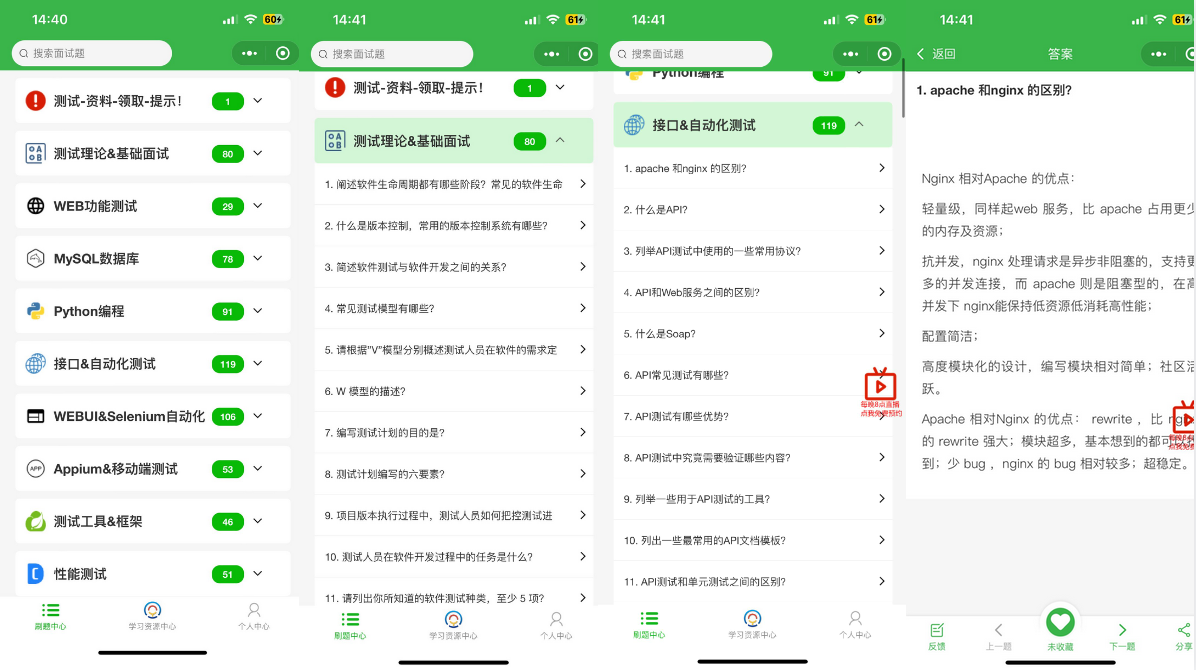As a professional security tester, here are some key steps that can help you conduct better security testing:
1. Understand the application: Gain an in-depth understanding of the application's functionality, architecture, and technology stack. This helps you understand potential security risks and vulnerabilities.
2. Develop a test plan : Create a detailed test plan to determine the scope, objectives and methods of the test. Consider the different layers involved such as networking, application logic, data storage, etc.
3. Conduct security requirements analysis : determine the security requirements of the application, including authentication, authorization, data privacy, etc. This helps ensure that the focus of your tests is correct.
4. Conduct a code review : Review the code of the application, looking for possible vulnerabilities, insecure practices, and potential weaknesses. This is the early stage of finding problems.
5. Conduct a penetration test : Simulate the behavior of an attacker, try to find vulnerabilities and exploit them. Tests include authentication bypass, SQL injection, cross-site scripting (XSS), and more.
6. Perform a security scan : Scan applications using automated tools to detect known vulnerabilities. This can help you spot some low hanging fruit quickly.
7. Test authentication and authorization : Ensure the security of user authentication and authorization mechanisms. Test password policies, session management, and access control.
8. Data privacy check : Ensure proper protection of sensitive data, such as encryption, data desensitization, etc.
9. Network security test : Check whether the network communication is safe to prevent data from being stolen or tampered with. Consider using protections such as encryption, SSL/TLS, etc.
10. Vulnerability management and reporting : Record the discovered vulnerabilities and work with the development team to resolve them. Provides a detailed report including problem description, impact, and suggested fixes.
11. Continuing attention and learning : The security field is constantly evolving, constantly paying attention to new security threats and vulnerabilities, and constantly learning and improving one's skills.
12. Compliance testing : According to applicable regulations and standards, such as GDPR, HIPAA, etc., conduct compliance testing to ensure that the application meets the relevant regulatory requirements.
Most importantly, security testing requires deep technical knowledge and creative thinking. Work closely with developers and teams to ensure applications are adequately protected in terms of security.
The following are supporting learning materials. For friends who do [software testing], it should be the most comprehensive and complete preparation warehouse. This warehouse also accompanied me through the most difficult journey. I hope it can help you too!

Software testing interview applet
The software test question bank maxed out by millions of people! ! ! Who is who knows! ! ! The most comprehensive quiz mini program on the whole network, you can use your mobile phone to do the quizzes, on the subway or on the bus, roll it up!
The following interview question sections are covered:
1. Basic theory of software testing, 2. web, app, interface function testing, 3. network, 4. database, 5. linux
6. web, app, interface automation, 7. performance testing, 8. programming basics, 9. hr interview questions, 10. open test questions, 11. security testing, 12. computer basics

Information acquisition method:
